Everything You Need to Know About This Opulent Style
While some may argue the era of Art Deco interior design is over, it’s undeniable that its spirit lives on. “When we’re talking about Art Deco, generally we’re thinking of the style and aesthetic most popular during the 1920s and ’30s,” says Jennifer Durand, design director at Jessica Lagrange Interiors. Often defined by geometric patterns and motifs, bold jewel tones, and rich material palettes, the interior design style is opulent and decadent. “These days, we probably wouldn’t do a whole authentic Art Deco interior,” adds Jessica Lagrange, founder of the aforementioned eponymous design firm. “But we like to use bits and pieces, which can be very timeless, and use them in a contemporary setting.” Below, AD outlines everything you need to know about Art Deco style, from its history to modern interpretations, and how you can bring the luxurious look into your home.
What is Art Deco interior design?
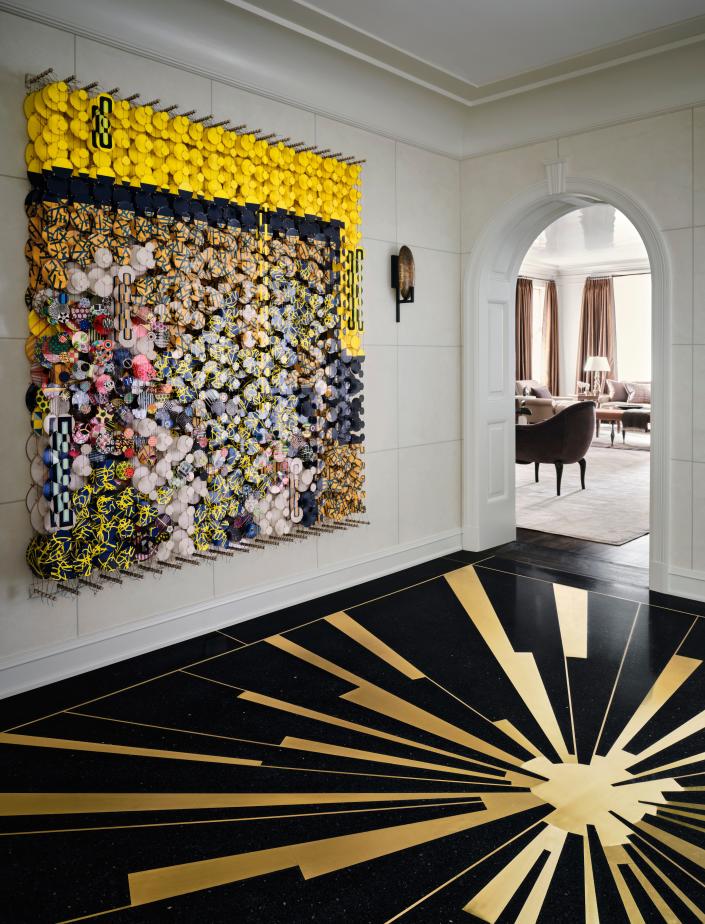
A starburst-inspired design on the floor of a home designed by Jessica Lagrange Studio.
Photo: Douglas Friedman.
According to Wesley Moon, interior designer and founder of Wesley Moon Design and Decoration, there are two ways to think about Art Deco design: the historical roots and the modern renditions. Of course, to appreciate the latter, you first have to understand the former.
History of Art Deco interior design
Historically, Art Deco, which is short for arts décoratifs, started in France in the early 1900s. “But it really flourished in America in the ’20s and ’30s,” Moon explains. Generally categorized as the style of art, interiors, architecture, and product design popular in the era between the First and Second World Wars, it didn’t get its name until 1925 during the Exposition Internationale des Arts Décoratifs et Industriels Modernes, which was held in Paris and was the first time the style was exhibited. Designs of this time were often defined by a streamlined look—generally composed of simple lines and geometric shapes for ornamentation—made from expensive materials. “When we think of Art Deco, we picture symmetrical, geometric, streamlined pieces with simplistic form,” Durand tells AD, “but made with really innovative, specialty materials.”

Jewel tones from a gilded table and velvet stools on display in Moon’s home.
Photo: Pernille Loof
Popular visionaries from the era include artists like René Lalique and Jean Dunand, product and furniture designers like Jacques Ruhlmann and Maurice Dufrène, interior designers like Jean-Michael Frank or Émile-Jacques Ruhlman, and architects such as William Van Alen or the firm Shreve, Lamb & Harmon. Predating midcentury-modern aesthetics, Art Deco drew influences from Art Nouveau, the Bauhaus school, and Cubism. Many of the most well-recognized Art Deco buildings—skyscrapers like the Chrysler Building and the Empire State Building, or Radio City Music Hall, for example—are in New York City, although remnants of the style can be found throughout the country. Tulsa, Oklahoma, and Detroit, Michigan, in particular, have impressive collections of Art Deco structures.
What is the difference between Art Deco and Art Nouveau?
While Art Deco and Art Nouveau were both extremely popular styles—and did feature some similar qualities—there are a few distinct differences. Generally, Art Nouveau was much more organic, often making use of more fluid, curved lines. Art Nouveau, though seen in architecture, is most prevalent in the decorative arts. It originated in the 1880s and often featured forms and motifs inspired by vines, flower stems, or other natural elements. Art Deco, on the other hand, made use of straighter, geometric, and more streamlined shapes.
Is Art Deco in style?

Checkered floors in an entryway designed by Jessica Lagrange Studio bring the geometric elements of Art Deco into a modern setting.
Photo: Douglas Friedman
While Art Deco is not in style the same way it used to be, that doesn’t mean there is no longer merit or beauty to the aesthetic. Generally, architecture and design historians see the start of World War II as the end of the Art Deco period, though the look had been fading for some time. Designers from the Bauhaus school—which was forced to close in 1933 under Hitler’s rule—migrated to other parts of the world, including the United States, bringing with them new ideas focused on simple, functional design. After the war, aesthetic values slowly started to change, switching to a utilitarian, unornamented standard and ushering in the era of international and midcentury-modern styles pioneered by visionaries like Le Corbusier and Mies van der Rohe. Following the Great Depression, many of the original principles of Art Deco—like rich materials and opulent ornamentation—were no longer affordable and, in some situations, no longer desirable.
Modern interpretations of Art Deco
However, like most interior design trends, tastes and principles are cyclical, and nothing is ever truly over. These days, as Moon and the designers from Jessica Lagrange Interiors note, it’s not overly common to see true-to-the-era replicated versions of Art Deco interiors. Instead, many modern designers opt for capturing the spirit of the Art Deco period by borrowing elements and embodying the principles of the movement. “A lot of people have said my apartment is very Art Deco, although I don’t particularly think of it as an Art Deco apartment,” Moon says. “But it does have a lot of those qualities: It’s got exuberance, it’s got opulence, everything about it is unique and specifically made for the space.”
Defining elements and characteristics of Art Deco interior design
For anyone looking to create a modern Art Deco look today, it’s best to understand the classic Deco elements in order to most appropriately reimagine them in a modern way.
What are the key design elements of Art Deco?

Though Moon doesn’t find his home to be a full Deco interior, the gilded walls of the sitting room certainly honor the opulent and bold elements of the style.
Photo: Pernille Loof; Styling: Mieke ten Have
Though not an exhaustive list, the following elements are generally used in Art Deco interiors:
-
Streamlined, symmetrical forms
-
Geometric designs as ornamentation; it’s common to see shapes such as:
-
Trapezoids
-
Triangles
-
Zigzags
-
Chevrons
-
Sunbursts
-
-
Rich material and textile palettes, including:
-
Ornamental light fixtures such as chandeliers or sconces
What are the main colors of Art Deco?
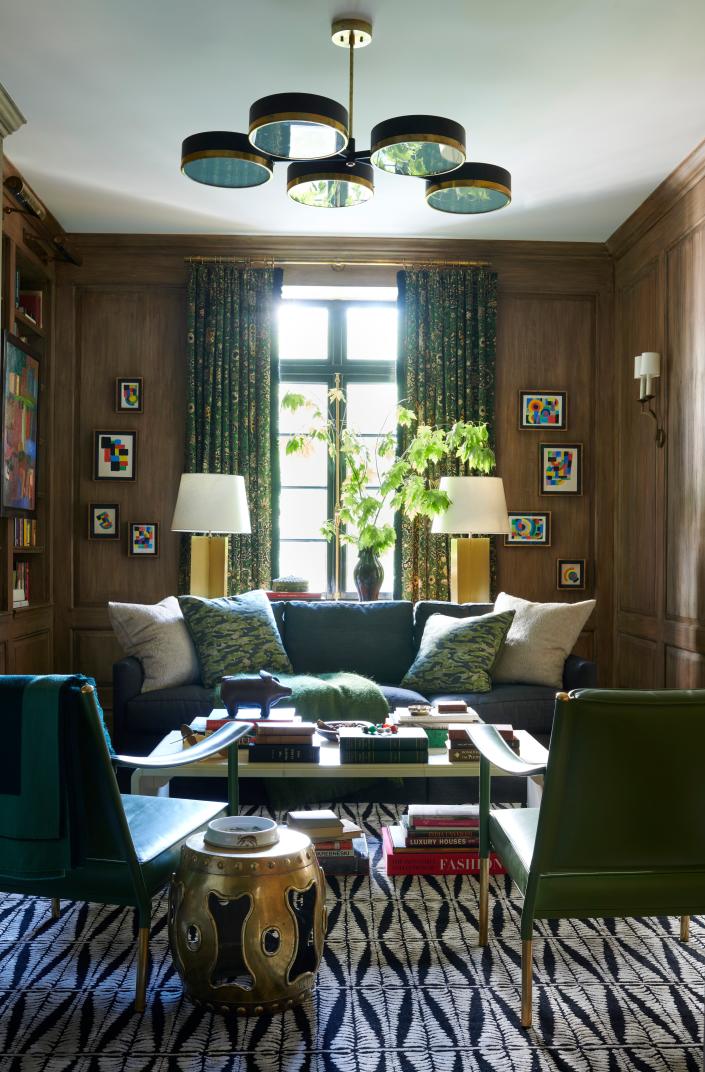
Jewel tones like emerald, gold, and sapphire are seen in this sitting area designed by Jessica Lagrange Interiors.
Photo: William Waldron.
“If you’re going back to traditional Art Deco in the ’20s, they used a lot of very rich, jewel tone color palettes,” says Durand. Often this was complemented by more neutral shades such as beiges, creams, or slightly muted yellows. Modern Deco interpretations can lean a bit more minimalist, but often still include bold colors.
Examples of Art Deco interior design
To better understand Art Deco—and get a few design ideas—consider both historic examples and modern interpretations designed by Lagrange and Moon.
Historic Art Deco
Radio City Music Hall

The grand foyer of Radio City Music Hall.
Photo: Courtesy of Radio City Music Hall
Radio City Music Hall has long been considered a quintessential example of Art Deco interiors and architecture. Donald Deskey was hired to design the interiors, which feature terrazzo floors, marble walls, and brass ticket booths.
The Chrysler Building
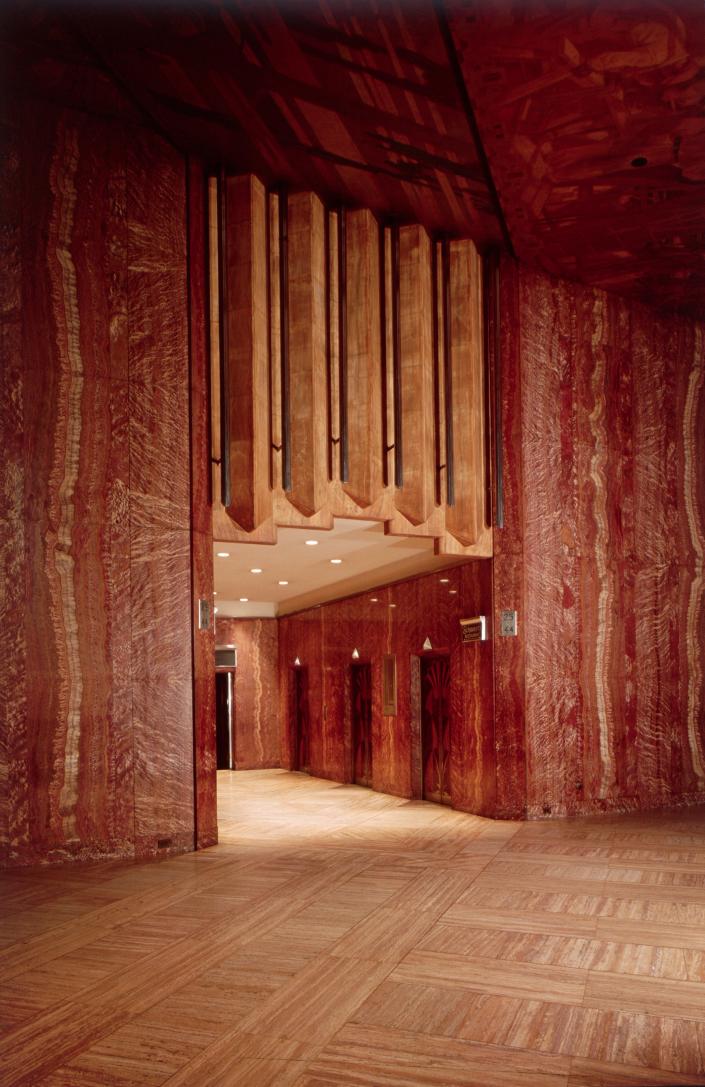
The lobby of the Chrysler Building.
Photo: Angelo Hornak/Getty Images
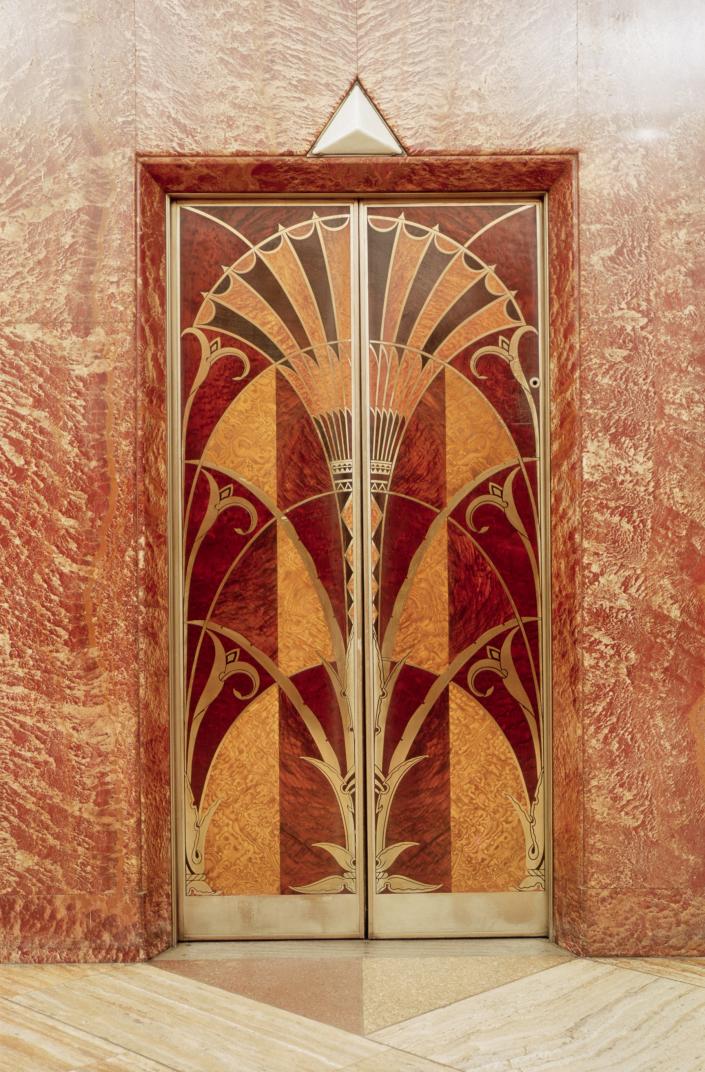
The doors of an elevator inside the Chrysler Building.
Photo: Angelo Hornak/Getty Images
An undeniable Art Deco masterpiece, the Chrysler Building, designed William Van Alen, is a prime example of the decadent materiality often found in interiors of the time. The lobby—which is triangular in shape—is the only publicly accessible part of the building, but it still certainly warrants a visit for anyone interested in the Deco interiors. Yellow travertine from Sienna makes up the floor, complemented by red-granite-clad walls. Lights covered in Belgian blue marble adorn the walls, and stainless-steel accents can also be found throughout the monumental interiors.
Modern Art Deco
Art Deco living room
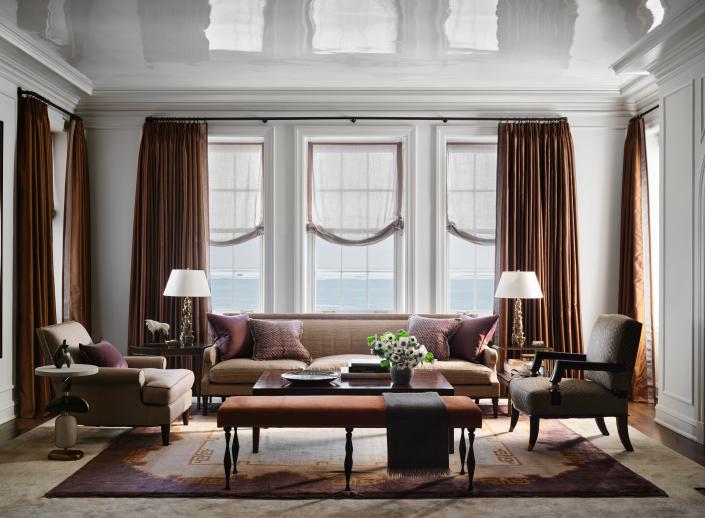
In this seating room designed by Jessica Lagrange Interiors, the designers have embraced the streamline form, rich color palette, and bold materiality popular in Art Deco interiors.
Photo: Douglas Friedman.
Art Deco dining room

The dining room in Moon’s home. The gilded chandelier and gold bench are reminiscent of the jewel-toned interiors of the Art Deco, while the “Scenes of Sicily” wallpaper inspires the old-world, well-traveled atmosphere of the style.
Photo: Pernille Loof.
Art Deco bedroom
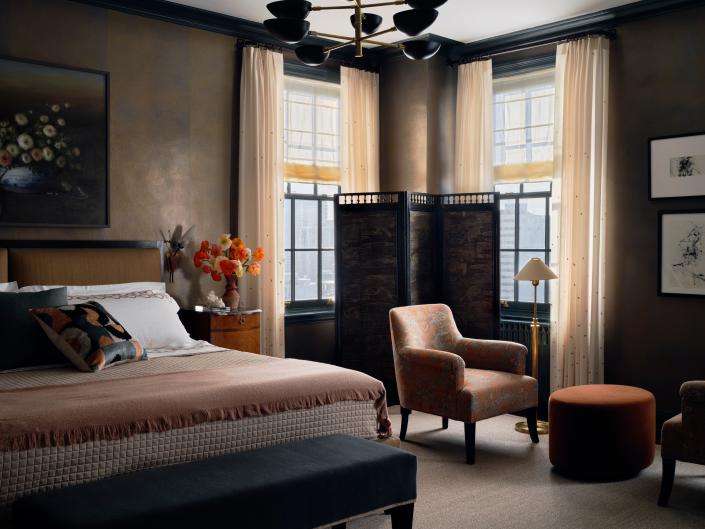
The black-lacquered light fixture and gold-toned floor lamp champion Deco sensibility in this bedroom designed by Jessica Lagrange Interiors.

Photo: Pernille Loof.
Art Deco bathroom
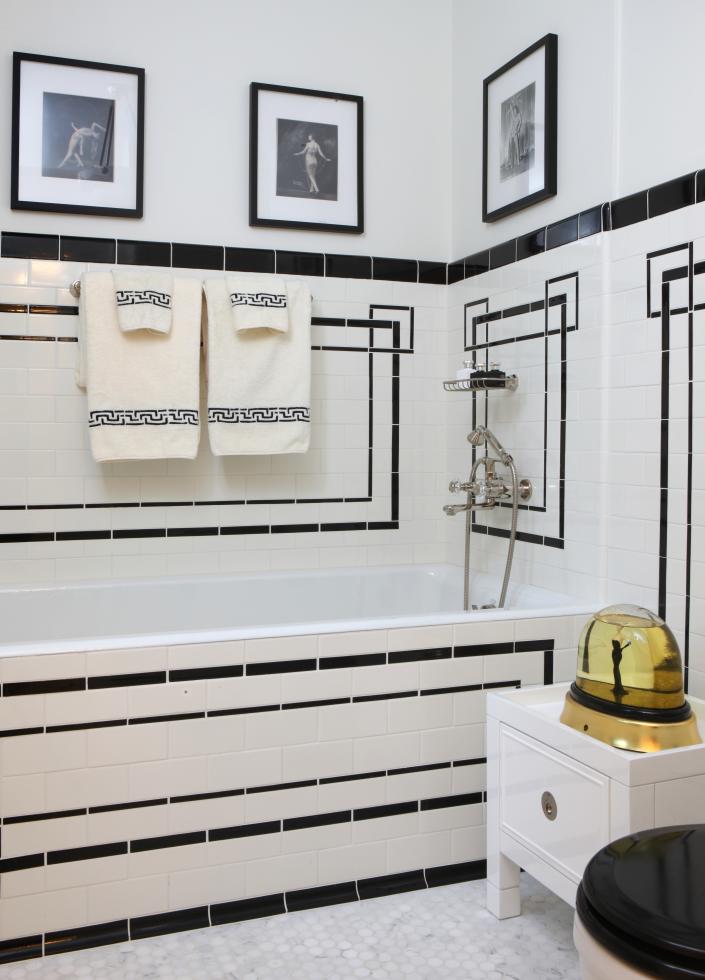
The bathroom in a Jessica Lagrange Interiors project. The streamlined, geometric tile accents add an undeniable Deco touch without going overboard.
Photo: TBC
How to achieve Art Deco interiors in your house
“I wouldn’t do a perfectly historical Art Deco room,” Lagrange says. “But I think Art Deco is always in style; I think you just use bits and pieces.” When it comes to your home design, you don’t have to live in a perfect replica of the Great Gatsby mansion to channel the romance of the Art Deco era; instead, it’s all about embracing the more luxurious, bolder parts of life. Lagrange says she lives in a building from the era, but the apartment itself didn’t particularly match the Art Deco architecture. “I wanted to speak to the architecture of the building, so I did some simple changes,” she says. “I did a black lacquer on all the doors, I changed the hardware, I restored the terrazzo floor, and I got rid of a lot of the downlighting, because you wouldn’t have seen as much downlighting at the time.”
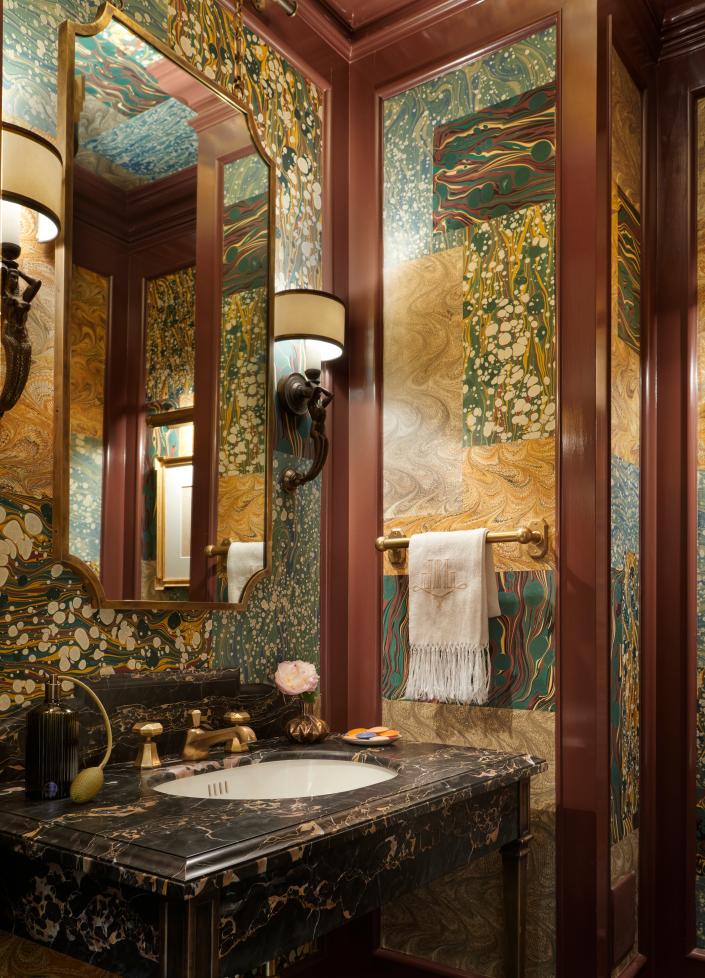
In this bathroom designed by Jessica Lagrange Interiors, rich colors and complex materiality embrace Deco-era decadence.
Photo: William Waldron
Moon says opting for a bit of eclecticism is another way to infuse Art Deco decor into your home. “It’s really great to mix in things that make you feel well traveled and worldly,” he says, “and I think that that’s very much an Art Deco style.” Other ways to channel the aesthetic include embracing more vertical space, as skyscrapers were an important part of the Art Deco era. Further, vertical space is often viewed as an antithesis to Frank Lloyd Wright’s prairie style, as well as similar movements that predated Art Deco and embraced horizontal space. “That would definitely be a nod to Deco,” Moon says. Of course, adding a rich material palette, geometric motifs, and a little glam will always go a long way in embracing a modern Art Deco look.
Originally Appeared on Architectural Digest
